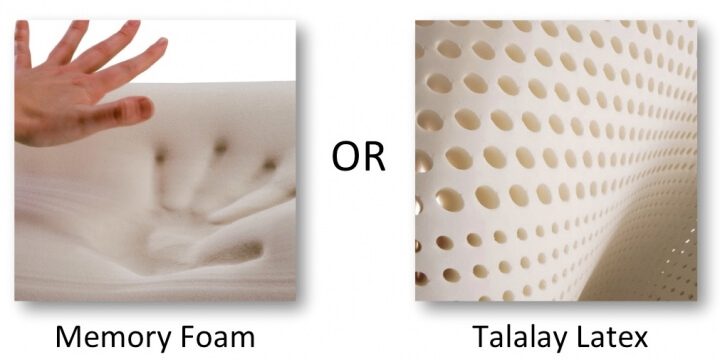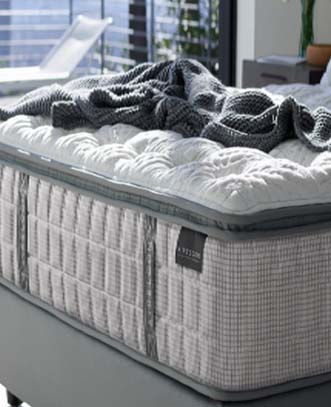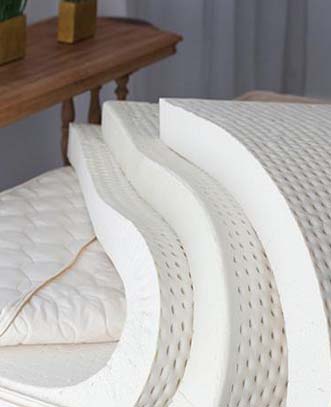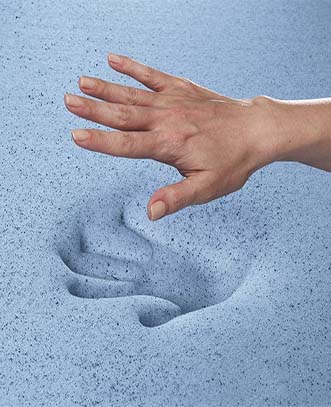Both Talalay latex and Memory Foam with memory Foam more well known due to its relative marketed as the premium mattress materials, but they are very different.
- Talalay latex is a rubber. Memory Foam is a foam, which doesn’t provide both support and pressure relief.
- Talalay latex rubber is a natural material derived from the rubber tree. Memory foam is a synthetic material and is a petroleum-based product.
- Talalay latex rubber has a breathable design and cell structure that provides a temperature neutral environment. Memory foam is a dense material, which needs heat to activate its pressure-relieving quality. It usually sleeps warmer.
- You “sleep on” Talalay latex rubber and it has an uplifting effect. You “sleep in” memory foam which provides a “sinking” effect.
- Talalay latex rubber is two-dimensional material. It is both supportive by being uplifting and is also pressure relieving. Most memory foam mattresses use memory foam in the pressure relief layer and traditional poly foam in the support layer.
- Talalay latex rubber is “bottomless.” Even when you lay on your side, your body does not “bottom out” into a hard layer in the mattress or on the foundation. Memory foam allows you to bottom out onto what is underneath it.
- Talalay latex rubber is a fast response material. When you move, it immediately responds to your new position. Memory foam is a slow response material.
- Talalay latex rubber is hypoallergenic and does not off-gas. Memory foam is a petroleum-based product.
- Talalay latex rubber is extremely durable. Because it is vulcanized, it is the most resilient material available in a mattress.
- Talalay latex rubber is inherently antibacterial and antifungal.
Like more information on latex mattresses? Read our Latex Mattress Buyers Guide







